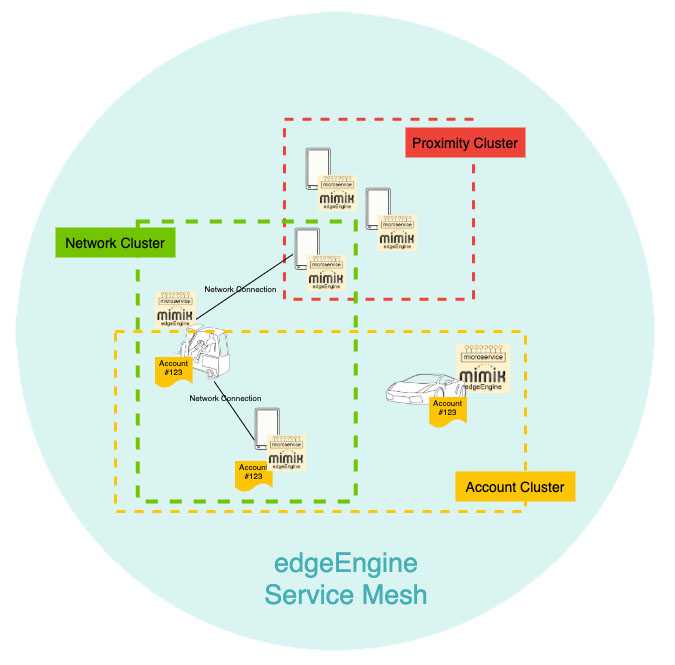- Introduction to edgeEngine
- How Does edgeEngine Service Mesh Work?
How Does edgeEngine Service Mesh Work?
The edgeEngine Service Mesh is intended to unify all the microservices running on edgeEngine nodes within a given edgeEngine Cluster under a single organizational unit. As the name implies, this organizational unit is the edgeEngine Service Mesh and can be inspected accordingly.
As mentioned previously in the section What Does edgeEngine Service Mesh Do?, edgeEngine microservices are organized within an edgeEngine Service Mesh according to the predefined cluster types, Network, Account or Proximity.

|
|---|
| Figure 1: The edgeEngine Service Mesh groups nodes according to 3 types of clusters |
You can read the details of the Service Mesh Network, Account and Proximity types in the Key Concepts section of this document here.
In addition to unifying the microservices running on various edgeEngine clusters; event, and log information about the activities of the microservices can be accessed using the edgeEngine Service Mesh.
Registering a microservice to the edgeEngine Service Mesh is automatic. Developers do not have to do anything special to have an edge node, and subsequently the microservices running on the given node, be part of a particular edgeEngine Service Mesh.
Developers gather information about the state of and the activities within the edgeEngine Service Mesh by working with the mimik Edge Node Discovery API and the edgeEngine Context Object. The edgeEngine Context Object is intrinsic to all microservices running under the edgeEngine Runtime. (The particulars of mimik Edge Node Discovery API and the edgeEngine Context Object are discussed in the Key Concepts section of the Developer Documentation.)